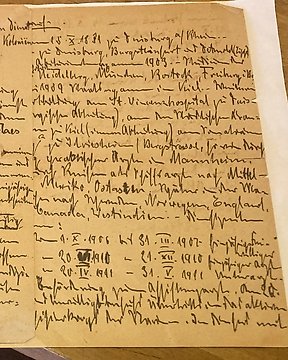
Anonym - Application letter from a German doctor in the Dutch Colonial Ministry ( Inlichtingsbureau voor den - 1919
N. 83233003
![Hartmann Schedel / A. Duerer, Wolgemut and Pleydenwurff - Liber Chronicarum / Nuremberg Chronicle [Sybil Tiburtina Oracle, Cesar, Augustus, Marc Anthony] - 1493](https://assets.catawiki.nl/assets/2024/4/22/a/7/f/a7f49ff8-660e-4251-a837-297989003c98.jpg)
N. 83233003
![Hartmann Schedel / A. Duerer, Wolgemut and Pleydenwurff - Liber Chronicarum / Nuremberg Chronicle [Sybil Tiburtina Oracle, Cesar, Augustus, Marc Anthony] - 1493](https://assets.catawiki.nl/assets/2024/4/22/a/7/f/a7f49ff8-660e-4251-a837-297989003c98.jpg)
Lot of 10 folio sheets - no.s 83+94 + 8 sheets of Register [from A to SU] , from the rare German edition of the 1493 Nuremberg Chronicle [approx.500 copies printed] .Text illustrated with altogether 22 woodcut engravings, depicting the mythic meeting of Augustus with the Sibyl, portraits of Julius Cesar, Augustus-Octavianus, Marc-Anthony, the poets/writers Ovidius Naso, Titus Livius, Solinus and Valerius Maximus, 6 woodcuts with pairs of Roman Consuls, and 5 portraits of epigones of Alexander the Great, last 3 'Bishops'.
In generally fair condition for its age . large waterstain in upper right corners, some light agetoning + soiling. Old repairs.
The mythic meeting of Augustus with the Sibyl, of whom he inquired whether he should be worshiped as a god, was often depicted by artists from the late Middle Ages onwards. In the versions known to the later Middle Ages, for example the account in the Golden Legend, Augustus asked the Sibyl whether he should be worshipped as a god, as the Roman Senate had ordered. She replied by showing him a vision of a young woman with a baby boy, high in the sky, while a voice from the heavens said "This is the virgin who shall conceive the saviour of the world", who would eclipse all the Roman gods. The episode was regarded as a prefiguration of the Biblical Magi's visit to the new-born Jesus and connected Ancient and Christian Rome, implying foreknowledge of the coming of Christ by the greatest of Roman emperors [From / more at: https://en.wikipedia.org/wiki/Tiburtine_Sibyl]
The Nuremberg Chronicle is an illustrated encyclopedia consisting of world historical accounts, as well as accounts told through biblical paraphrase. Subjects include human history in relation to the Bible, illustrated mythological creatures, and the histories of important Christian and secular cities from antiquity. Finished in 1493, it was originally written in Latin by Hartmann Schedel, and a German version was translated by Georg Alt. It is one of the best-documented early printed books—an incunabulum—and one of the first to successfully integrate illustrations and text.
The author of the text, Hartmann Schedel, was a medical doctor, humanist and book collector. He earned a doctorate in medicine in Padua in 1466, then settled in Nuremberg to practice medicine.
The painters, Wolgemut and Pleydenwurff, were to provide the layout of the chronicle, to oversee the production of the woodcuts. Albrecht Duerer, then an apprentice with Pleydenwurff, is believed to have contributed to the engraving of the illustrations.
Anton Koberger, printer of the Nuremberg Chronicle, printed the first humanist book in Nuremberg in 1472. Sebald Shreyer, one of the patrons of the chronicle, commissioned paintings from classical mythology for the grand salon of his house. Hartmann Schedel, author of the chronicle, was an avid collector of both Italian Renaissance and German humanist works. Hieronymus Münzer, who assisted Schedel in writing the chronicle's chapter on geography, was among this group, as were Albrecht Dürer and Johann and Willibald Pirckheimer.
Come fare acquisti su Catawiki
1. Scopri oggetti speciali
2. Fai l’offerta più alta
3. Paga in tutta sicurezza